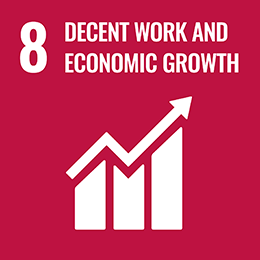FinTech & Banks

Share this article
How disrupted is the banking industry?
For all the clamour about FinTech and its disruption of the traditional banking industry—well documented last year by McKinsey that suggested that between 20% and 60% of banking profits globally were vulnerable to predation by FinTech entrants—the surprise should be that it has taken this long to gain real momentum. And the most interesting question should be why?
Technological change both gives and takes away. As the 1990s drew to a close, the music industry was nearing the end of an unprecedented wave of profitability resulting from a switch to new storage technology; the CD that allowed it to generate much higher margins. But the move to online distribution would shortly destroy those margins creating a market for recorded music that is structurally less profitable.
How did that happen? In music’s case piracy is the obvious answer, but not the only one. Another very major factor was the unpicking of the industry’s most profitable product: the album. Once people could buy individual tracks rather than whole albums, the system of cross-subsidy that had sustained recorded music companies for decades started to unravel.
Something similar is under way in banking. The traditional model of a multi-product bank sustained by a semi-opaque system of cross-subsidy from one product line to another is creaking. In the UK, for example, ‘free-in-credit’ current account banking has been an industry standard for nearly 30 years and ‘free’ ATM withdrawals are an accepted norm, both of them paid for by the profits on other areas – unsecured lending, unauthorised overdrafts, and mortgages and so on.
A threat to this system comes from the appearance of large numbers of FinTech entrants—online firms generally focused (at least initially) on a single product line: unsecured personal loans (Zopa, Lending Club, Prosper, Ratesetter and Auxmoney); unsecured small business lending (Funding Circle, OnDeck Capital, Kabbage); property and asset-backed lending of all sorts (LendInvest, Landbay, Assetz Capital, Wellesley, Ablrate, Borro); invoice and related cash flow finance (MarketInvoice, Platform Black, Spotcap, Finexkap); as well as foreign exchange transactions (TransferWise, Kantox); as well as a multitude of payments providers (Square, Apple Pay).
These FinTech companies seem to be disrupting the traditional banking industry on several fronts. First, they are attacking single product lines and potentially hurting incumbent banks in two ways: by competing down margins on profitable lines, and/or by competing profitably for the banks’ loss-leading business lines (small and micro-business lending being a key example), which open the door to a wider relationship with the customer and so facilitate profitable sales of other products. The retail bankers’ greatest hits album is being reduced to a series of tracks that can be cherry-picked by all comers.
Second, the FinTechs are doing this through purpose-built online technology platforms that are not burdened with the legacy system issues that most banks are still negotiating, and that enable them to operate without the cost burden that a branch network brings. This, so the theory goes, enables the FinTechs to operate on tighter spreads between the cost of capital and net revenue and gives them a sustainable competitive advantage.
Research presented by PwC at the P2P Finance Association conference in London in early 2014 suggested that online P2P lenders had operating costs that enabled them to achieve a spread between cost of capital and income that was between two and five percentage points wider than a bank’s, mainly thanks to technology advantages and lower regulatory capital requirements.
But to return to the question I posed at the outset: why has it taken this long for technology’s disruption of banking to unfold? The answer, I suspect, is that several factors have to come together for an industry dominated by a small group of very large incumbents to be seriously disrupted.
Not only must the technology available to entrants be good enough and its adoption by the market be sufficiently advanced, but disruption also requires a major external shock that (at least temporarily) reduces the market power and profitability of the incumbents. In the case of the music industry this was digital piracy. In the case of banking it was hugely increased regulation and the sustained pressure on margins caused by years of extremely low base rates.
Taken together, these factors have produced good conditions for the disrupters to gain a foothold. This they have started to do, but where might things go from here? Some of the pain the banking industry is feeling should eventually abate. Already, there are signs that some regulators are starting to take a less hard line approach, notably the UK’s Financial Conduct Authority. Also, if one assumes that base rates in most places will one day start to rise, then banking margins ought to start recovering.
But more than either of these factors, it is the benefit of banking’s incumbency that is likely to prove its greatest asset. In the UK, there is overwhelming evidence that consumers and businesses continue to exhibit huge inertia and reluctance to switch their main banking relationships.
The most recent competition inquiry into banking found that “a combination of low customer engagement, barriers to searching and switching and incumbency advantages in the provision of personal current accounts …is leading to adverse effects on competition”.
Even after sustained efforts by the government to make switching current accounts easier, the rate remains extremely low at about 1.4% or so in 2015. This is based on recent BACS’ numbers, which show that there were a little more than one million switches over the 12 month period. It’s the same story in the market for household utilities in spite of the availability of extremely good online price comparison services.
This power of incumbency may ultimately enable banks to assimilate a lot of the new competition by emulation, outright acquisition or by forming partnerships. It is already happening. For example, Goldman Sachs is setting up an online lending platform that should look and feel to its customers much like a FinTech operation.
In Europe, BBVA has been an active seeker of tie-ups with FinTech entrants for some time, while Santander’s InnoVentures arm and ING have both invested in a number of FinTech firms.
In the US, JP Morgan, via Chase, has agreed a deal with OnDeck Capital that will allow it to use OnDeck’s tech platform to offer a Chase-branded online small business loan service funded off its own balance sheet. In effect, JP Morgan will white-label OnDeck’s technology platform to underwrite small business loan applications and advance funds much more quickly than via its traditional processes.
FinTech firms have attracted billions in venture funding – some of it from bank-backed funds – and are undoubtedly changing the game in the banking market. There is no way back to the world before FinTech. But never underestimate the ability of the incumbents to absorb and assimilate new sources of competition.
Disclosure: The writer owns shares in Platform Black Ltd.
Photo: © Niki Natarajan 2018
Artist: Ino
Article for information only. All content is created and published by CdR Capital SA. The views and opinions expressed in this article are those of the author(s). Information on this website is only directed at professional, institutional or qualified investors and is not suitable for retail investors. None of the material contained on this website is intended to constitute an offer to sell, or an invitation or solicitation of an offer to buy any product or service. Nothing in this website, or article, should be construed as investment, tax, legal or other advice.
Related articles
Innovation or Diversion?
Innovation is a slippery subject. The problem is that hype must first overcome experience and without the benefit of hindsight it’s difficult to tell an innovative development from an interesting diversion. Take eBay. Which aspects proved durable?

Peer to Peer Economy
“This on demand, or so-called 'gig economy', is creating exciting economies and unleashing innovation. But it is also raising hard questions about workplace protections and what a good job will look like in the future” ― Hillary Clinton

FinTech: Are Banks Broken?
Hard to imagine that The Innovator’s Dilemma: When New Technologies Cause Great Firms to Fail was written in 1997; a year before Apple’s iMac and Google were launched and the year that Microsoft became the most valuable company in the world.




